2 CV Prototypes - TPV - Très Petite Voiture (Very
Small Car)
|
|
Right
despite a total prohibition on any
photographs of the TPV, this
photograph was taken at the Bureau
d'Etudes in Ferté-Vidame during road
tests in 1939.
Below
this TPV prototype was
displayed at the Classic
Motor Show 2009.
|
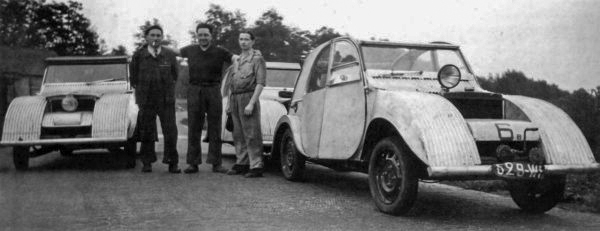 |
|
|
|
|
| 1939 TPV techical
specifications |
|
ENGINE
|
|
|
Layout
|
2 horizontally opposed cylinders
|
|
Bore and stroke
|
62 x 62 mm
|
|
Cubic capacity
|
375 cc
|
|
Max power
|
8 bhp @ 3200 rpm
|
|
Valvegear
|
2 overhead valves per cylinder, central,
gear-driven camshaft
|
|
Electrical system
|
6 volt, dynamo, 25Ah battery, no starter -
starting handle
|
|
Carburation
|
Solex 22 HD, dry air filter, mechanical fuel
pump
|
|
Cooling
|
Water
|
|
TRANSMISSION
|
|
|
Layout
|
Front wheel drive
|
|
Clutch
|
Single dry disc, foot operated
|
|
Gearbox
|
3 forward speeds and reverse. Fascia-mounted
gearlever
|
|
Tyres
|
Michelin Pilote 125x400
|
|
|
BODYWORK
|
|
|
Chassis
|
Platform
|
|
Body
|
4 door, 4 seat, fabric roof
|
|
SUSPENSION
|
|
|
Type
|
Fully independent on all 4 wheels, 8 torsion
bars, anti-dive geometry
|
|
BRAKES
|
|
|
Front
|
Drums
|
|
Rear
|
Drums
|
|
Operation
|
Hydraulic, pedal operated
|
|
Parking Brake
|
Mechanical with hand operated lever
|
|
STEERING
|
|
|
Type
|
Rack and pinion
|
|
WEIGHT
|
|
|
Unladen
|
400kg
|
|
PERFORMANCE
|
|
|
Top speed
|
50 km/h
|
|
Fuel consumption
|
5l/100 km
|
|
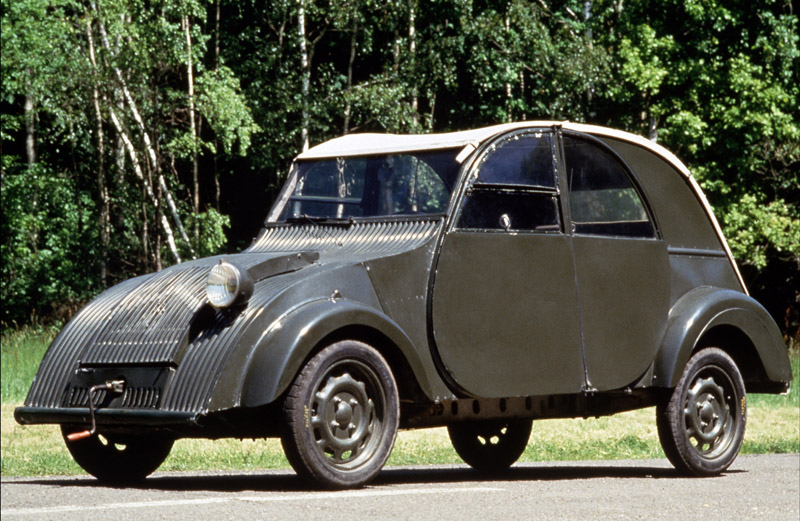 |
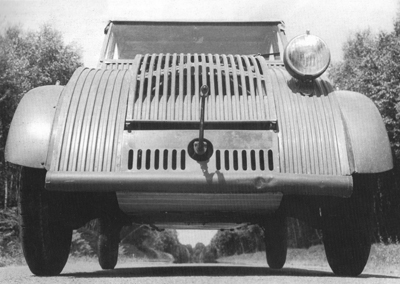 |
 |
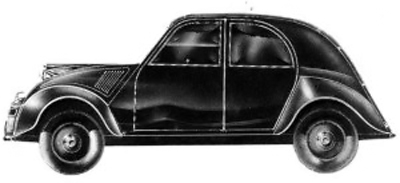 |
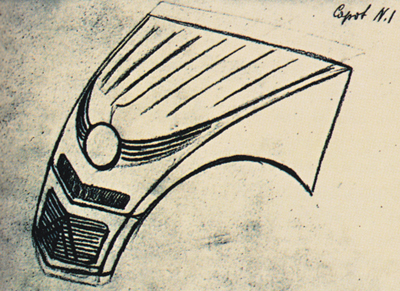 |
|
The war years gave the company time to revise
and simplify the design.
By
1942,
the TPV was beginning to look much more like
the car that was
revealed in 1948 although only a single
headlamp was fitted.
Mechanically
too,
it was far closer than the 1939 models - the
over--complicated
torsion bar springing had been replaced by
the familiar inter-connected
longitudinal coil springs of the production
vehicles.
Transmission
was only three speed and the engine was a
700 cm3 flat twin.
The
cars
made widespread use of duralinox - a
lightweight aluminium alloy
but more conventional (and cheaper)
materials were employed in the
production vehicles.
|
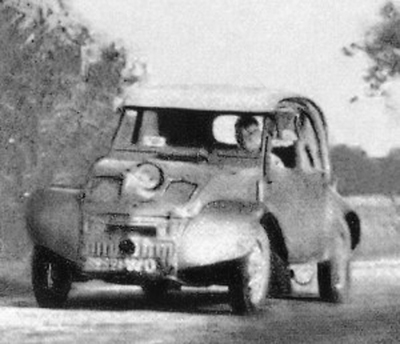 |
|
|
 |
©
1996 Julian Marsh |
|
|